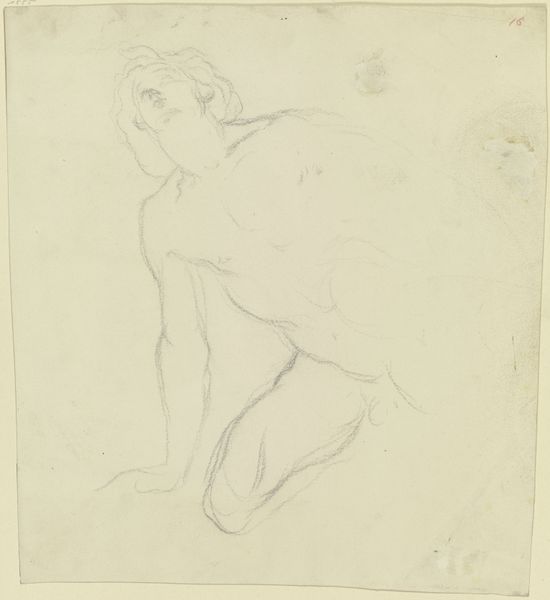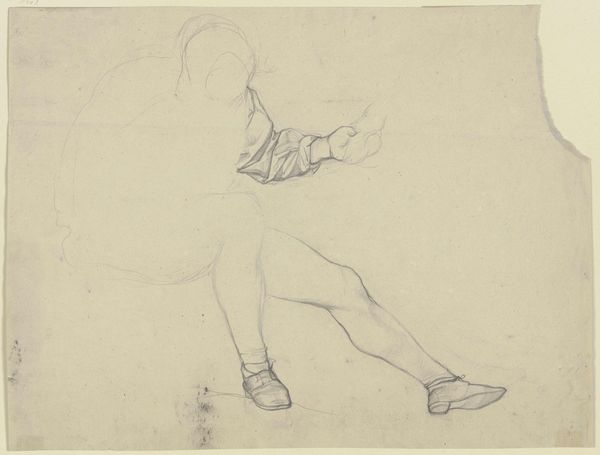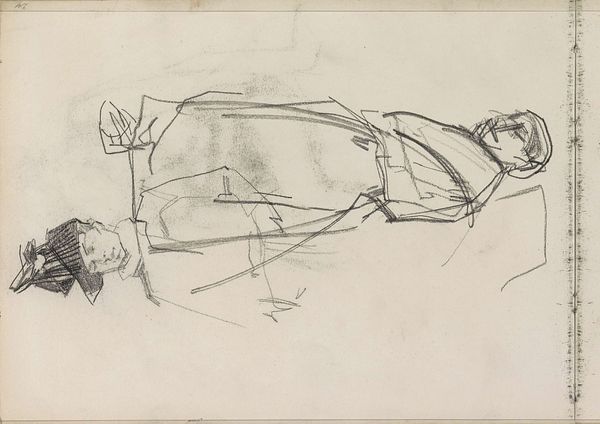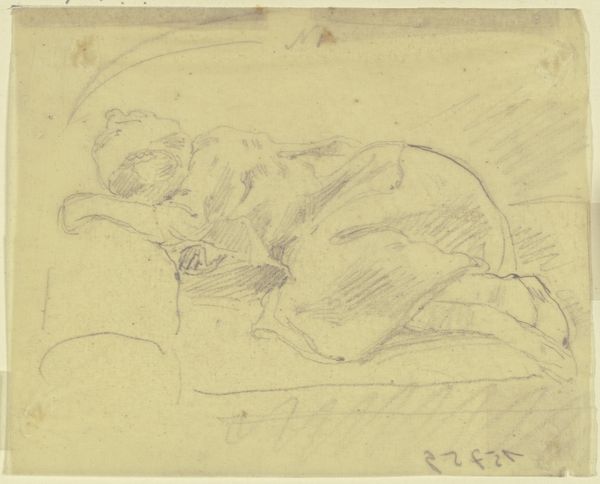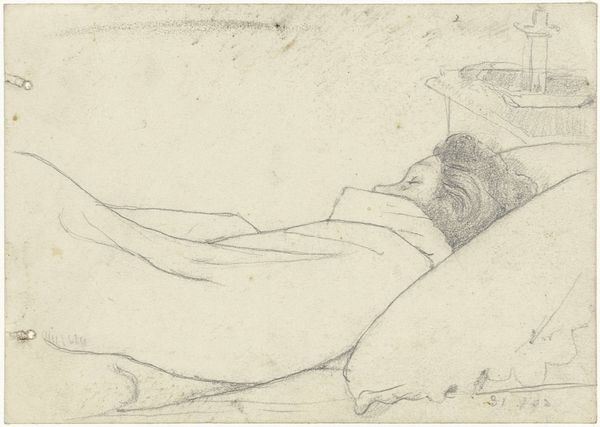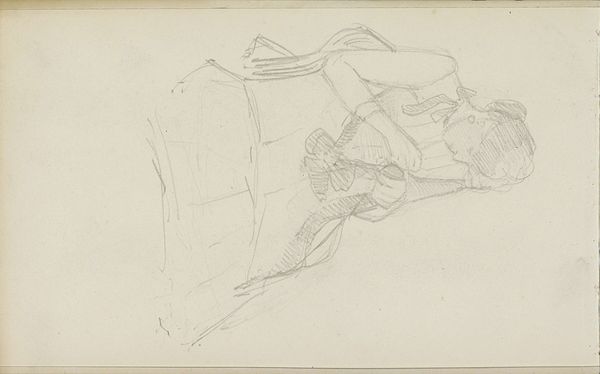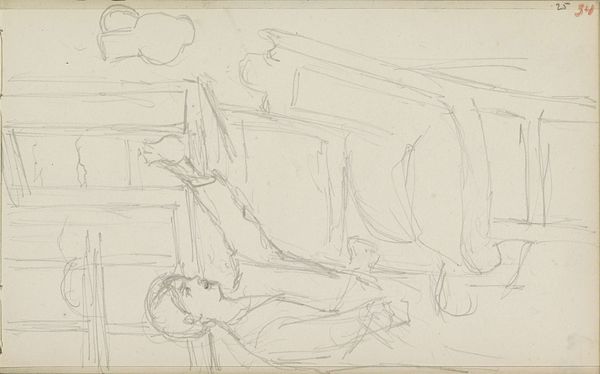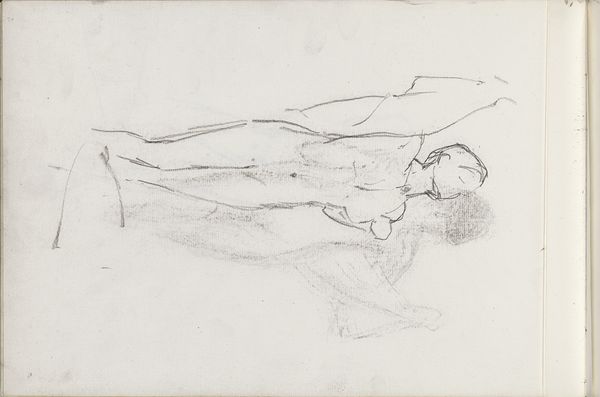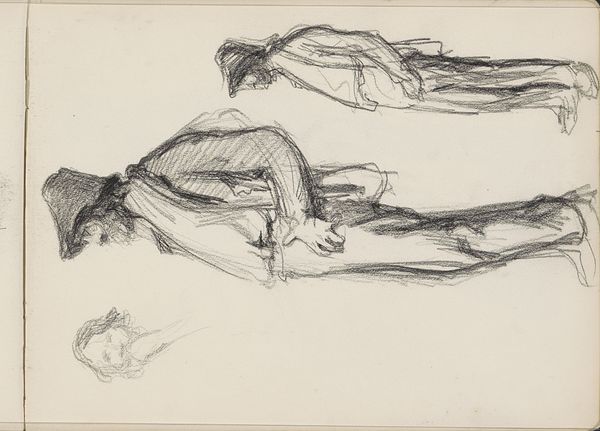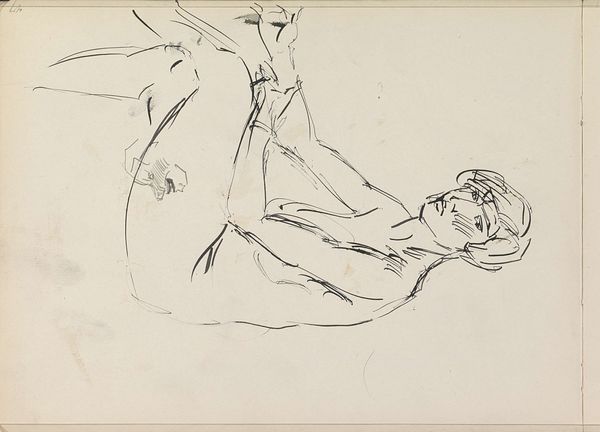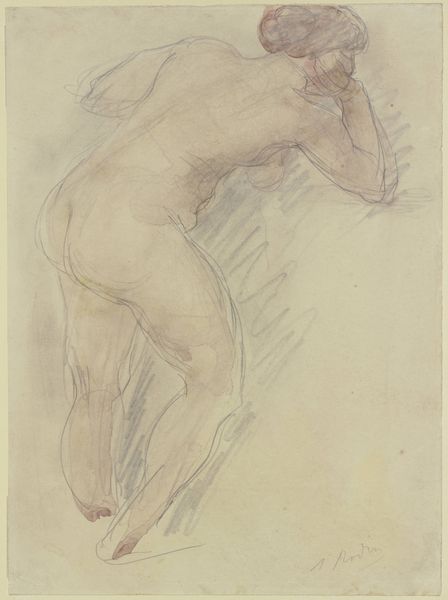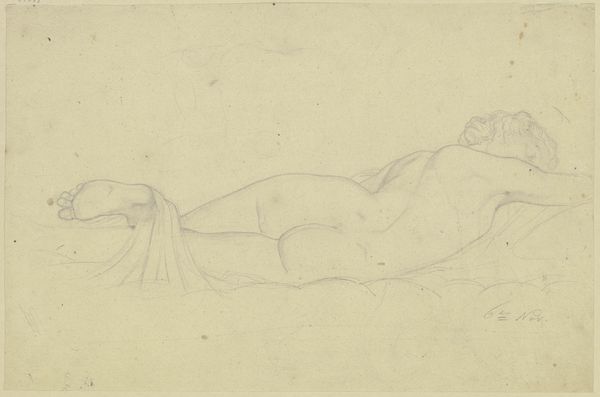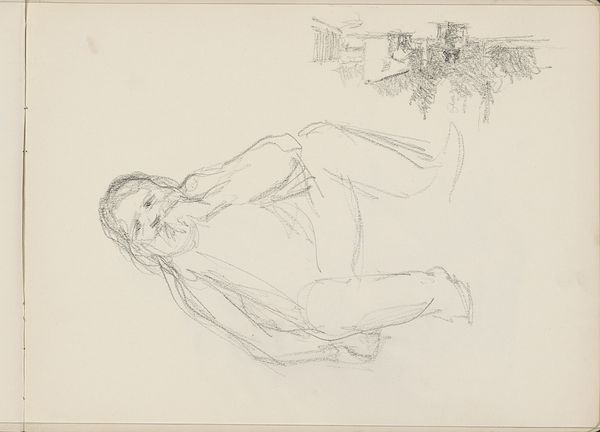
Fallen Jockey (study for "Scene from the Steeplechase: The Fallen Jockey") c. 1866
drawing, pencil
portrait
drawing
figuration
pencil
academic-art
Dimensions: overall: 26 x 34.3 cm (10 1/4 x 13 1/2 in.)
Copyright: National Gallery of Art: CC0 1.0
Curator: At first glance, the fragility is striking. There’s something both elegant and tragic about the prone figure rendered so lightly. Editor: This is Edgar Degas's study titled "Fallen Jockey", a preliminary sketch made around 1866 for his larger painting, "Scene from the Steeplechase." It’s a pencil drawing, almost ghostly, capturing a moment of vulnerability not typically depicted in sporting art. Curator: Exactly! In this piece, the academic style blends with the emergent Impressionist interest in modern life and capturing movement. He offers a stark, unromantic portrayal of a fallen athlete. What kind of narratives about success and risk in equestrian sport does Degas challenge with such portrayals of fallen jockeys? Editor: Degas made studies upon studies of racehorses and their riders. The process tells its own story, one of relentless labor—looking, drawing, revising. Considering his other depictions of horses and jockeys, the repetition and obsession hint at the material and human costs of spectacle and entertainment. You see that in how lightly but assuredly the muscles are sketched out, and the fall depicted with what looks almost like clinical detachment. Curator: The sketch isolates him from the grand narrative of the steeplechase. He is now just a human body, failed, on the ground, no longer elevated or glorified by the race. Is there commentary about the working class being injured for the sport and enjoyment of the upper classes? Editor: Certainly. Beyond the elite social circles surrounding racing, we need to consider the laborers who physically make that world function—and who bear the brunt of the sport's inherent dangers. You can feel Degas wrestling with the materiality of risk. His lines seems to simultaneously conceal and reveal that complexity, don't they? Curator: Absolutely, considering that these sporting scenes gained prominence through commissioned works for wealthy patrons, Degas seems to question that market. I wonder how his patrons felt. Editor: Yes, by studying the production processes – his many sketches, his use of innovative materials – we unveil those tensions that underlie supposedly glamorous leisure pursuits. That adds so much more meaning. Curator: Precisely. A simple sketch opens up avenues to discuss the social dynamics of 19th-century France. Editor: It highlights that even within such a fragile medium as pencil on paper, there is tremendous value for discussing broader socio-economic themes.
Comments
No comments
Be the first to comment and join the conversation on the ultimate creative platform.
